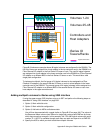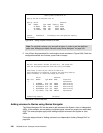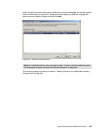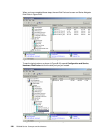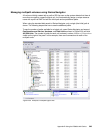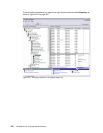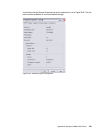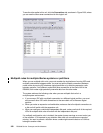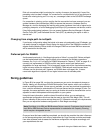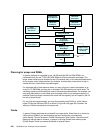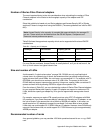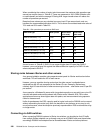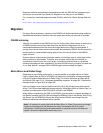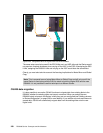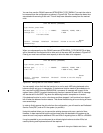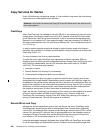
Appendix B. Using the DS6000 with iSeries 353
Disk unit connections might be missing for a variety of reasons, but especially if one of the
preceding rules has been violated. If a connection for a multipath disk unit in any disk pool is
found to be missing during an IPL or vary on, a message is sent to the QSYSOPR message
queue.
If a connection is missing, and you confirm that the connection has been removed, you can
update Hardware Service Manager (HSM) to remove that resource. Hardware Service
Manager is a tool for displaying and working with system hardware from both a logical and a
packaging viewpoint, an aid for debugging Input/Output (I/O) processors and devices, and for
fixing failing and missing hardware. You can access Hardware Service Manager in System
Service Tools (SST) and Dedicated Service Tools (DST) by selecting the option to start a
service tool.
Changing from single path to multipath
If you have a configuration where the logical units were only assigned to one I/O adapter, you
can easily change to multipath. Simply assign the logical units in the DS6000 to another I/O
adapter and the existing DDxxx drives will change to DMPxxx and new DMPxxx resources
will be created for the new path.
Preferred path for DS6000
As discussed previously in “Avoiding single points of failure” on page 343, iSeries multipath
can be implemented to allow a logical volume to be accessed via multiple connections.
However, the
Preferred Path facility for DS6000 discussed in Chapter 3, “RAS” on page 45, is
currently not implemented in OS/400 and this may lead to some small performance
degradation for large workloads. This is because a longer path will be used when accessing
logical volumes across the midplane in the DS6000. Preferred path would access these
volumes over the shortest path. However, as OS/400 does not support this, it uses a
round-robin algorithm to spread I/O to a logical volume over all available paths.
Sizing guidelines
In Figure B-34 on page 354, we show the process you can use to size external storage on
iSeries. Ideally, you should have OS/400 Performance Tools reports, which can be used to
model an existing workload. If these are not available, you can use workload characteristics
from a similar workload to understand the I/O rate per second and the average I/O size. For
example, the same application may be running at another site and its characteristics can be
adjusted to match the expected workload pattern on your system.
Using this base information, and the rules-of-thumb that follow, you can estimate an
approximate configuration which can then be used as input into Disk Magic (DM). This will
give an indication of the service and wait time per I/O. If these do not meet your requirements,
then you can adjust the hardware configuration in Disk Magic accordingly.
Once you have this base modelling completed, you should also consider the other influences
on the storage subsystem (such as any requirement for Copy Services and other workloads
from other systems) and re-assess the hardware configuration and adjust accordingly until
your requirements are met.
Note: Disk Magic is for IBM and IBM Business Partner use only. Customers should contact
their IBM or IBM Business Partner representative for assistance with Capacity Planning,
which may be a chargeable service.



